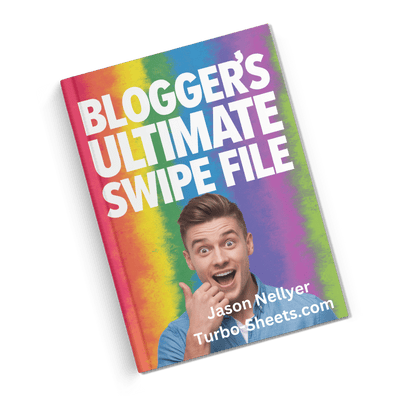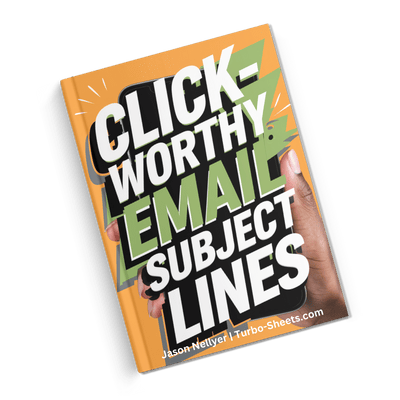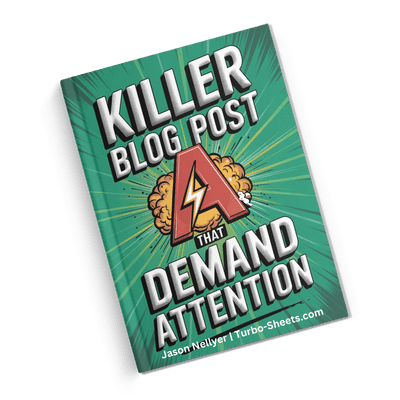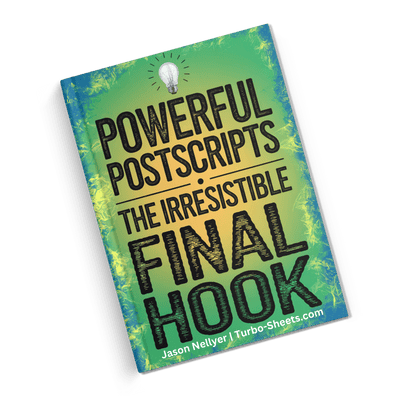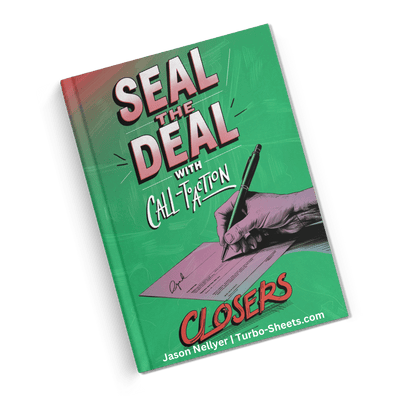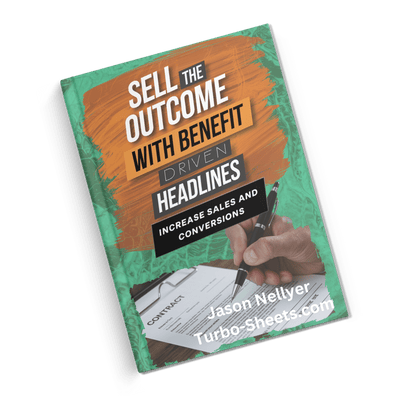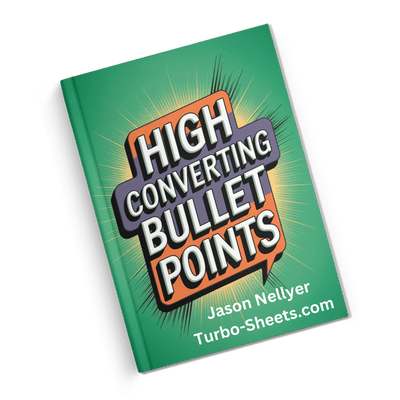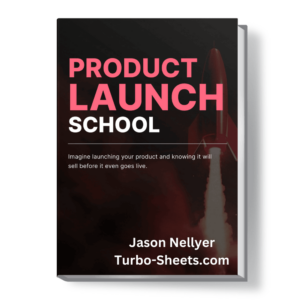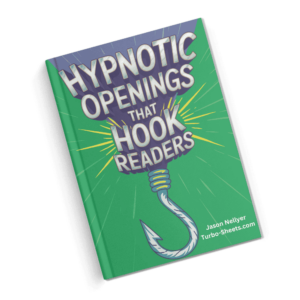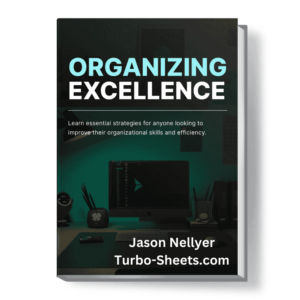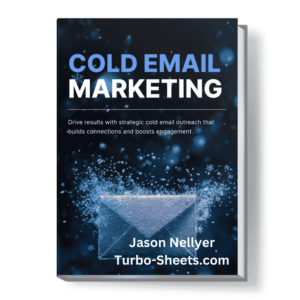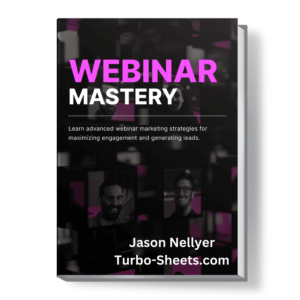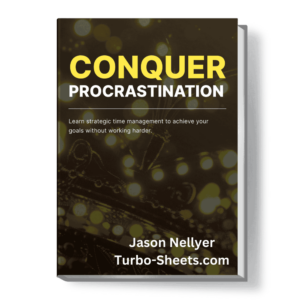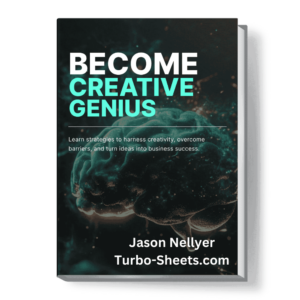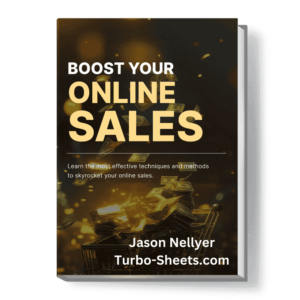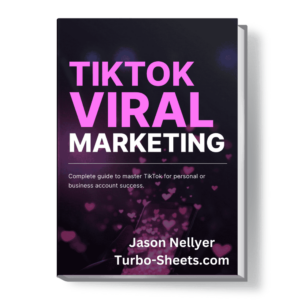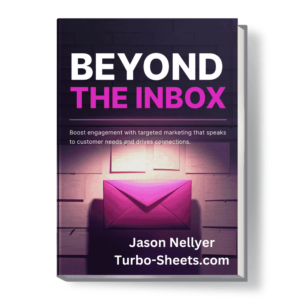🔥 Take Charge Of Your Blog With My Expert Tips and Tools! | Empowering You With My Blog and Resources!
"Value First" Content Emails
Free Wisdom...
Struggling to connect with your audience and turn those website visitors into loyal fans? What if your emails could build genuine relationships *before* asking for a sale? 🤔
That's the magic of "value first" content emails.
But isn't sending loads of information away for now? Won't they just take the value and disappear? 🤨
It can feel that way, sure. Giving without taking straight away.
However, think of it as planting seeds. Nourishing those connections.
In This Article
What Are Value Emails?
Defining Value Content Emails
Okay, let's get straight to it. Value first content emails? Simply put, these are emails you send that focus on providing genuine help, information, or entertainment to your audience *without* immediately trying to sell something. Think helpful tips, insightful advice, or even just a good laugh. 😄 It's about building trust first.
These aren't your typical "buy now!" blasts. Instead, they aim to enrich your subscribers' experience. Offer something useful. Solve a small problem. Make their day a tiny bit better. You're playing the long game here.
Consider it like offering someone a really good cup of coffee before you ask them for a favour. It just feels… nicer, doesn't it? And they're more likely to listen when you eventually do have something to ask.
It's about showing you care about more than just their wallet. You're building a relationship. A connection. A proper human interaction, even through the digital মাধ্যম. 🤝
The Purpose of Value First
The main aim here? To build solid relationships with your audience. You want them to see you as a trusted source of information, not just another business trying to make a quick buck. Think of it as making friends before you try to sell them your amazing widget.
By consistently delivering value, you're establishing authority in your niche. People start to look forward to your emails. They see you as someone who knows their stuff. And that trust? That's pure gold when it comes to… well, eventually offering them something.
It's also a brilliant way to keep your brand top-of-mind. Even if they don't need your product right now, when the time comes, who do you think they'll remember? The company that just kept shouting "sale!", or the one that actually helped them out a few weeks back? 🤔 Exactly.
Plus, valuable content often gets shared. People forward helpful emails to their friends or colleagues. This expands your reach organically. It's like having your audience become part of your marketing team. Pretty neat, eh? ✨
Value in Cold vs. Warm Emails
Now, here's a key point: "value first" looks a little different depending on whether you're sending a cold email or a warm email. Cold emails are your initial outreach to folks who don't know you from Adam. Warm emails are for people already on your list.
For cold emails, the value needs to be immediate and highly relevant to their specific situation. You've got to quickly show them why they should care. What's in it for *them* right now? Make it super concise and impactful.
With warm emails, you've got a bit more leeway. You can build on the existing relationship. Offer more in-depth content, share stories, and nurture that connection over time. They're already somewhat invested in what you do.
Think of it like meeting someone new versus catching up with an old mate. The conversation will naturally flow differently, right? Same principle applies to your emails. Know your audience temperature! 🌡️
Examples of Value Content
So, what does "value" actually look like in an email? Loads of things! It could be a simple checklist that solves a common problem in your industry. Perhaps a short video tutorial demonstrating a useful technique.
Maybe you share a curated list of helpful resources or tools. Or even just an interesting article or piece of news with your own insightful commentary. Think "helpful human" rather than "sales robot".
Consider sharing behind-the-scenes glimpses of your business. People love to see the human side of things. It builds authenticity and makes you more relatable. It's like letting them peek behind the curtain. 👀
Don't forget entertainment! A funny anecdote, a thought-provoking question, or even a well-placed GIF can add value by simply brightening someone's day. Value isn't always about hard facts and figures. Sometimes, it's just about making a connection. 😊
Why Value First Works
Building Trust and Authority
Let's be honest, folks are bombarded with sales pitches every single day. So, when you actually offer something useful without immediately asking for cash, it makes you stand out. You become a breath of fresh air in their inbox. 🌬️
By consistently providing valuable content, you position yourself as an expert in your field. People start to rely on your insights. They see you as someone who genuinely knows their stuff. That trust is the bedrock of any good relationship, business or otherwise.
Think about the people you trust in your own life. It's usually those who have helped you out, offered good advice, or consistently delivered on their promises, right? It's no different in the business world. Value builds that crucial trust.
And with trust comes authority. When people trust you, they're more likely to listen to your recommendations down the line. You've earned their attention and respect. That's a powerful position to be in. 💪
Nurturing Leads Effectively
Value first content is a fantastic way to nurture leads. Think of it as gently guiding potential customers along the path towards eventually making a purchase. You're not pushing; you're helping them along the way.
By providing relevant and helpful information at each stage of their journey, you're building a connection and showing that you understand their needs. This makes them far more receptive when you eventually do present an offer.
It's like dating, not a rushed marriage proposal! You build rapport, find common ground, and establish a genuine connection before you even think about the "next step". Makes sense, doesn't it?
Leads nurtured through value-driven content are often more qualified and more likely to convert. Why? Because they already have a positive perception of your brand and trust your expertise. It's a win-win situation. 🎉
Improving Email Engagement
Let's face it, no one likes getting emails that are just constant sales pitches. They end up in the trash or, even worse, marked as spam! Value-packed emails, on the other hand, are actually welcomed.
When your emails offer genuine value, people are more likely to open them, read them, and even click on any links you include. This boosts your engagement metrics – open rates, click-through rates, all that good stuff.
Higher engagement tells email providers that your content is actually wanted. This can improve your deliverability and ensure your emails actually reach your audience's inboxes. It's all connected, you see.
And when people engage with your content, they're also more likely to remember you. You're making a positive impression. You're becoming a familiar and welcome guest in their digital space. Hello there! 👋
Long-Term Customer Loyalty
Building long-term customer loyalty isn't about quick wins; it's about fostering lasting relationships. And value first content plays a huge role in that. By consistently providing helpful and engaging content, you're showing your customers that you care about them beyond the transaction.
Loyal customers are worth their weight in gold. They're more likely to make repeat purchases, recommend you to their friends, and stick with you even when competitors try to woo them. They become your advocates.
Think about your favourite brands. The ones you keep going back to. Chances are, they offer you more than just a product or service. They provide value in other ways too – helpful content, excellent customer support, a sense of community.
By focusing on value first, you're investing in the long-term health of your business. You're building a community of loyal fans who will support you for years to come. That's the real prize. 🏆
Cold Email Value Content
The Art of the First Impression
With cold emails, you're essentially introducing yourself to someone who has never heard of you before. Your first email needs to make a fantastic impression. It needs to immediately grab their attention and show them why they should care. What's the hook?
Generic greetings and vague statements simply won't cut it. You need to be specific and relevant to their situation. Do your research. Understand their pain points. Show that you've actually taken the time to learn about them.
The value you offer in a cold email needs to be concise and easily digestible. They're busy people. Get straight to the point and highlight the benefit for them. What problem can you help them solve right now?
Think of it like meeting someone at a networking event. You wouldn't launch straight into a sales pitch, would you? You'd try to find common ground and offer something interesting or helpful first. Same principle applies here. Be a helpful human. 😊
Providing Immediate Relevance
Your cold email needs to scream "this is for you!" right from the subject line. Make it personal and relevant to their specific needs or challenges. Generic subject lines get ignored. Personalised ones get opened.
Reference something specific you've learned about their business or industry. Show that you've done your homework. This demonstrates that you're not just sending out a mass email blast. You've put in the effort.
Offer a quick win. Can you share a tip or a resource that they can use immediately to see a positive result? Something actionable and easy to implement? That's powerful stuff.
Remember, they don't know you yet. You need to earn their trust quickly by providing value that's directly applicable to their current situation. Make it about them, not about you. What's in it for them? 🤔
Focusing on a Single Point of Value
Don't try to cram too much into your initial cold email. Focus on delivering one clear and concise piece of value. Overwhelming them with information is a surefire way to lose their attention.
Identify their biggest pain point and offer a small, actionable solution or insight related to that. Keep it brief and easy to understand. One impactful point is far more effective than several vague ones.
Think quality over quantity. A short email with a genuinely helpful tip is much better than a long, rambling email that tries to cover too much ground. Respect their time.
Your goal with that first cold email is simply to pique their interest and demonstrate your expertise. You want them to think, "Hmm, this person actually gets it." That's a win. Small steps, big impact. ✨
The Soft Call to Action
While the focus is on value, your cold email should still have a subtle call to action. This doesn't mean asking them to buy something right away. Instead, it's about inviting further engagement.
Perhaps you could offer to share a relevant resource or answer a specific question they might have. Make it easy for them to take the next step without feeling pressured.
A simple question like, "Would you be open to a quick chat about this?" can be effective. It's low-pressure and allows them to engage on their own terms.
The key is to make the call to action about receiving more value. You're not asking for a sale; you're offering further assistance. Think "helpful next step" rather than "buy now!". 😊
Warm Email Value Content
Nurturing Existing Relationships
Warm emails are sent to people who have already shown some interest in your business – they've subscribed to your list, downloaded a resource, or interacted with your website. You've already got a foot in the door.
The goal here is to deepen those relationships and build stronger connections over time. You're no longer a stranger; you're becoming a familiar and trusted voice in their inbox. Nurture that connection.
With warm emails, you can afford to share more in-depth content and explore topics in greater detail. You have a more engaged audience who are likely to be receptive to more information.
Think of it like catching up with a friend. You can have more nuanced conversations and delve into topics that are mutually interesting. You're building on an existing foundation. 🤝
Providing Deeper Insights
Because your warm audience is already somewhat familiar with you, you can offer more substantial value. Share detailed guides, in-depth tutorials, or case studies that showcase your expertise.
Don't be afraid to delve into more complex topics or share more advanced strategies. Your subscribers have shown they're interested in learning more from you.
Consider sharing exclusive content that's only available to your email list. This makes your subscribers feel special and valued. It's like giving them VIP access. ✨
The key is to continue providing genuine value that helps them achieve their goals or solve their problems. Keep educating, keep informing, keep inspiring. Be their go-to resource.
Storytelling and Connection
Warm emails are a great place to weave in storytelling and build a stronger emotional connection with your audience. Share your own experiences, challenges, and successes. Make yourself relatable.
People connect with stories. They help to humanise your brand and make you more memorable. Don't just share facts; share narratives that resonate with your audience's emotions and aspirations.
Consider sharing customer success stories. This not only provides social proof but also inspires your subscribers and shows them what's possible. It's like saying, "Hey, if they can do it, so can you!" 💪
By sharing your story and the stories of others, you're building a community around your brand. You're creating a sense of belonging and making your subscribers feel like they're part of something bigger. That's powerful stuff. 😊
Segmenting for Targeted Value
One of the beauties of warm emails is that you can segment your audience based on their interests or past behaviour. This allows you to deliver even more targeted and relevant value.
For example, if someone has downloaded a guide on a specific topic, you can send them follow-up emails with more advanced tips and resources related to that topic. This shows you're paying attention to their specific needs.
Segmentation ensures that you're not sending generic content to everyone. Instead, you're delivering information that's highly relevant to each subscriber's individual interests. It's like having a one-on-one conversation.
By providing targeted value, you're increasing engagement and making your subscribers feel truly understood. It shows that you're not just sending mass emails; you're sending personalised help. That makes all the difference. 🎉
Finding Your Value Angle
Understanding Your Audience's Needs
The first step to providing value is to truly understand what your audience needs and wants. What are their biggest challenges? What questions do they have? What are their goals and aspirations?
Conduct thorough audience research. Look at your website analytics to get the low down.
HTML
See what questions people are asking in online forums and social media groups related to your industry. Pay attention to the comments and feedback you receive on your existing content.
Talk directly to your customers! Send out surveys, ask for feedback, and have conversations. The more you understand their world, the better you can tailor your value content to meet their specific needs.
Think about the problems your product or service solves. What are the underlying issues that lead people to seek your solution? Your value content can address these broader challenges.
Identifying Your Unique Expertise
What are you really good at? What unique knowledge or skills do you possess? Your value content should leverage your expertise and offer insights that your audience can't easily find elsewhere.
Don't be afraid to share your perspective and your unique approach to things. That's what will make your content stand out from the crowd. Authenticity is key here.
Think about your own "aha!" moments and the lessons you've learned along the way. Sharing these personal insights can be incredibly valuable to your audience. They appreciate the real-world experience.
Consider what makes your business different. What's your unique selling proposition? Can you translate that into valuable content that resonates with your audience?
Brainstorming Content Ideas
Once you have a good understanding of your audience's needs and your own expertise, it's time to brainstorm content ideas. Think about different formats – blog posts, videos, checklists, templates, infographics, etc.
Consider creating content that answers frequently asked questions. These are often goldmines for providing immediate value. What are the common sticking points for your audience?
Look at your existing content. Can you repurpose it or expand on it to create new value for your email subscribers? Don't always start from scratch.
Think about creating a series of value-driven emails that address a specific topic in detail over time. This can keep your audience engaged and coming back for more.
Aligning Value with Your Product
While the focus is on providing value without immediately selling, your content should still be relevant to your product or service. The value you offer should naturally lead people towards understanding how you can help them further down the line.
Think about how your product solves a bigger problem. Your value content can address that broader problem, positioning your product as a key part of the solution when the time is right.
For example, if you sell accounting software, your value content could focus on topics like budgeting, financial planning, or tax tips. These are all relevant to your audience and naturally connect to your product.
The goal is to build trust and establish yourself as a helpful resource in your industry. When your audience eventually needs a solution like yours, you'll be the first one they think of. It's a subtle but powerful connection.
Crafting Engaging Content
Writing Compelling Subject Lines
Your subject line is the first (and sometimes only) impression your email makes. It needs to be compelling enough to make people want to open it. Think about what would make *you* click.
Use strong verbs and create a sense of curiosity or urgency (where appropriate). Ask questions or make intriguing statements. Make it clear what value the recipient will get by opening the email.
Personalisation can work wonders in subject lines. Including the recipient's name can significantly increase open rates. Make them feel like the email is specifically for them.
Keep your subject lines concise and to the point. Mobile users often only see the first few words. Make every word count! Get straight to the benefit.
Using a Conversational Tone
Write your emails like you're talking to a friend. Use a warm, friendly, and approachable tone. Avoid overly formal language or jargon that your audience might not understand. Keep it real.
Use contractions (like "you're" instead of "you are") and more casual language. This helps to create a more natural and relatable feel. It's like having a chat over coffee.
Don't be afraid to inject some personality into your writing. Let your brand's voice shine through. Are you funny? Informative? Empathetic? Let that come across.
Read your emails aloud before you send them. Does it sound like something a real person would say? If not, revise it. Aim for a natural flow and rhythm.
Structuring for Readability
Long blocks of text can be intimidating. Break up your emails into shorter paragraphs. Use headings, subheadings, bullet points, and white space to make your content easier to scan and digest.
Highlight key information using bold text or italics. This helps readers quickly grasp the most important takeaways. Make it easy for them to get the gist even if they're just skimming.
Use visuals where appropriate. Images, GIFs, or short videos can break up text and make your emails more engaging. A little visual flair can go a long way.
Think about the mobile experience. Many people will be reading your emails on their phones. Ensure your formatting is mobile-friendly and easy to read on a smaller screen.
Incorporating Multimedia
Don't just rely on text. Consider incorporating different types of media into your value emails. Videos can be great for tutorials or demonstrations. Audio clips can add a personal touch.
Infographics can be a visually appealing way to share data or complex information. Checklists and templates offer practical value that recipients can use immediately.
Experiment with different formats to see what resonates best with your audience. Track your engagement metrics to see what types of content get the most attention.
Remember to keep any multimedia elements relevant to the value you're providing. Don't just include them for the sake of it. They should enhance the message, not distract from it.
Long-Tail Keywords in Emails
Understanding Long-Tail Keywords
Long-tail keywords are longer, more specific keyword phrases that people use when they're closer to making a purchase or looking for very specific information. Think "best running shoes for flat feet" instead of just "running shoes".
While emails aren't directly indexed by search engines in the same way as web pages, incorporating long-tail keywords naturally within your content can still be beneficial. It helps you speak directly to the specific needs and interests of your audience.
When you use the exact language your audience is using, it shows that you understand their problems deeply. This builds rapport and makes your content feel more relevant and helpful. It's like you're reading their minds!
Think about the specific questions your audience is asking. Long-tail keywords often take the form of questions. Addressing these questions directly in your emails can be a powerful way to provide value.
Using Keywords Naturally
The key is to incorporate long-tail keywords naturally within your email copy. Don't stuff them in awkwardly just for the sake of it. Your writing should still flow smoothly and sound conversational.
Think about how you would naturally use these phrases if you were talking to someone directly. Integrate them into your sentences in a way that feels organic and helpful.
For example, if you're writing an email about choosing the right coffee maker, you might naturally use phrases like "how to choose a coffee maker for small spaces" or "best drip coffee maker with a timer".
Focus on creating valuable content that answers specific questions or addresses particular needs. When you do that, relevant long-tail keywords will often appear naturally within your writing.
Keywords in Subject Lines and Headings
Consider using relevant long-tail keywords in your subject lines and headings where it makes sense. This can help to immediately signal to your audience that the email content is relevant to their interests.
For example, a subject line like "Quick Tips for Finding the Best Organic Dog Food for Sensitive Stomachs" is much more targeted than just "Dog Food Tips".
Using specific keywords in your headings and subheadings also helps to structure your content and make it easier for readers to quickly understand what the email is about.
Again, the key is to be natural and prioritise clarity. Don't sacrifice a compelling subject line or a clear heading just to shoehorn in a keyword.
Long-Tail for Content Ideas
Your long-tail keyword research can also be a fantastic source of ideas for your value content. What specific questions are people asking? What problems are they trying to solve?
Each long-tail keyword can potentially become the topic of a valuable email or a series of emails. Address these specific needs directly and you'll be providing real value to your audience.
Think about creating "how-to" guides or answering "what is..." type questions based on your long-tail keyword research. These types of content are often highly valuable and shareable.
By focusing on the specific language and questions of your audience, you can create email content that truly resonates and positions you as a helpful expert.
Measuring Email Engagement
Key Metrics to Track
To understand how well your value first content emails are performing, you need to track key engagement metrics. Open rates tell you how many people are opening your emails.
Click-through rates (CTR) show you how many people are clicking on the links within your emails. This indicates how engaging your content is and how interested people are in learning more.
Conversion rates track how many people take a desired action after clicking a link in your email, such as downloading a resource or making a purchase (eventually!).
Unsubscribe rates are also important to monitor. A high unsubscribe rate could indicate that your content isn't resonating with your audience or that you're emailing them too frequently.
Analysing Your Results
Don't just track the numbers; analyse what they mean. Are your open rates higher for certain types of subject lines? Are certain topics generating more clicks than others?
Look for trends and patterns in your data. This will help you understand what kind of value content your audience finds most engaging and useful. Learn from what works and what doesn't.
A/B testing different elements of your emails, such as subject lines, calls to action, or even the content itself, can provide valuable insights into what resonates best with your subscribers.
Pay attention to qualitative feedback as well. Read the replies you receive to your emails. What are people saying? What questions are they asking? This can provide valuable context to your quantitative data.
Using Email Marketing Tools
Your email marketing platform will provide you with the data you need to track your engagement metrics. Familiarise yourself with the reporting features of your chosen tool.
Most platforms allow you to segment your audience based on their engagement levels. You can then tailor your future content to those who are most active and re-engage those who are less so.
Take advantage of features like link tracking and heatmaps to see which parts of your emails are getting the most attention. This can help you optimise your content layout and placement of key information.
Regularly review your email marketing analytics. This will help you continuously improve your value first content strategy and ensure you're delivering the most engaging and effective emails possible.
Iterating and Improving
Your email marketing strategy shouldn't be static. Continuously iterate and improve based on your engagement data and feedback from your audience. What can you do better next time?
Don't be afraid to experiment with new content formats or topics. Sometimes the best way to discover what resonates is to try new things and see what happens.
Pay attention to industry trends and best practices, but always keep your own audience's preferences in mind. What works for one business might not work for another.
The key is to be data-driven but also human-centric. Use your analytics to inform your decisions, but always remember that you're communicating with real people with real needs and interests.
Avoiding Common Pitfalls
Being Too Promotional Too Soon
The biggest mistake you can make with value first content emails is to pivot to a hard sell too quickly. You need to build trust and provide genuine value before you start asking for the sale.
Resist the urge to include constant promotional messages in your value emails. The focus should be on helping your audience, not just selling to them. Think "give" before "take".
If you do include a call to action, make it soft and relevant to the value you've provided. For example, you could offer a related resource or invite them to learn more about a specific topic.
Remember, the goal of value first is to build a relationship. Pushing for a sale too early can damage that trust and lead to unsubscribes. Be patient and play the long game.
Not Providing Genuine Value
Don't mistake thinly veiled promotional content for genuine value. Your audience is smart, and they'll see right through it if you're just trying to sell under the guise of being helpful.
Make sure the information, tips, or resources you share are genuinely useful and actionable. They should provide real benefit to your recipients, even if they never become paying customers.
Focus on solving real problems and answering real questions. Your audience will appreciate your genuine efforts to help them, and that will build goodwill towards your brand.
If you're not sure if your content is truly valuable, ask yourself: "Would I find this helpful if I received it from someone else?". Be honest with yourself.
Inconsistent Emailing
Building a relationship takes consistency. If you only send value emails sporadically, your audience is likely to forget about you or lose interest. Establish a regular emailing schedule.
Whether it's weekly, bi-weekly, or monthly, find a frequency that works for you and stick to it. This helps to keep your brand top-of-mind and ensures your audience knows when to expect valuable content from you.
Communicate your email schedule to your subscribers so they know what to expect. This helps to manage their expectations and reduces the likelihood of them unsubscribing.
Consistency doesn't mean bombarding your audience with emails. Find a balance that keeps you present without overwhelming their inboxes. Quality over quantity is still important.
Ignoring Segmentation
Treating your entire email list the same way means you're likely sending irrelevant content to some of your subscribers. This can lead to lower engagement and higher unsubscribe rates. Segment your audience.
Group your subscribers based on their interests, past behaviour, or demographics. This allows you to send more targeted and relevant value content that speaks directly to their needs.
For example, if someone has downloaded a guide on a specific product feature, you can send them follow-up emails with more advanced tips and use cases for that feature.
Segmentation shows your audience that you're paying attention to their individual needs and preferences. This makes your value content even more valuable and increases engagement.
Getting Started Today
Identify Your Audience's Biggest Pain Point
Start by thinking about the single biggest challenge your ideal customer faces. What keeps them up at night? What problem are they desperately trying to solve? This will be the foundation of your initial value content.
Brainstorm a few simple ways you can offer immediate help or insight related to this pain point. Think quick wins and actionable tips that they can implement right away.
Don't overthink it. Your first value email doesn't need to be a magnum opus. Focus on providing one clear and helpful piece of information.
Remember, the goal is to start building that relationship and demonstrating your willingness to help. Even a small act of value can make a big difference in a cold inbox.
Create One Piece of Value Content
Based on the pain point you identified, create a short and focused piece of value content. This could be a checklist, a short video, a list of helpful resources, or a brief guide.
Keep it concise and easy to digest. Remember that you're likely reaching busy people who don't have a lot of time to read lengthy emails.
Focus on providing practical, actionable advice that your recipients can use immediately. The more useful your content is, the more likely they are to engage with it.
Don't strive for perfection with your first attempt. The most important thing is to get started and begin delivering value to your audience.
Send Your First Value Email
Once you've crafted your first piece of value content, it's time to send it out! If it's a cold email, make sure it's highly targeted and relevant to the recipient's specific situation. If it's a warm email, send it to a segment of your list that would find it most helpful.
Pay close attention to your subject line. Make it clear what value the recipient will find inside. A compelling subject line is crucial for getting your email opened.
Include a soft call to action that encourages further engagement, such as asking a question or offering a related resource. Make it easy for them to take the next step.
Don't be discouraged if you don't see immediate results. Building relationships takes time. Focus on consistently providing value, and the results will follow.
Track and Iterate
After sending your email, monitor your engagement metrics. How many people opened it? Did they click on any links? Did you receive any replies?
Analyse your results to see what worked well and what could be improved. Use this feedback to refine your future value content and your overall email marketing strategy.
Don't be afraid to experiment. Try different formats, topics, and subject lines to see what resonates best with your audience. Continuous learning and adaptation are key.
Remember that building strong relationships through value first content emails is a long-term investment. Be patient, be consistent, and always focus on providing genuine help to your audience.
Conclusion
So there you have it! "Value first" content emails aren't some secret trick; they're about being a helpful human. By focusing on providing genuine value *before* you ask for anything, you build trust, nurture relationships, and ultimately create a more loyal and engaged audience. It might feel counterintuitive at first, but trust me, putting your audience's needs first really does pay off in the long run. Get out there and start sharing your knowledge – your audience will thank you for it!
Think of each value-packed email as a deposit in your relationship bank. The more you give, the stronger that connection becomes. And when the time is right, those nurtured relationships are far more likely to convert into happy, long-term customers. It's a win-win!
Don't just take my word for it – give it a go! Start small, be consistent, and track your results. You might be surprised at the positive impact that genuinely helpful emails can have on your ecommerce business. Now go forth and spread some valuable email goodness!
Points For Consideration
-
- Identify your audience's key questions.
- Create one valuable, actionable tip today.
- Schedule your first "value first" email.
- Track your email engagement metrics closely.
- Always prioritise providing genuine help.
Hi! I'm Jason!

Hey there! I'm Jason and i'm here to help you succeed with your online business.
Whether you are an internet marketer or a regular business with a website I can help you succeed.
Looking for more traffic, leads or sales? Stick around, you've come to exactly the right place to help you succeed!
(And yeh, I LOVE coffee!)
Let's Connect!
Subscribe
Join 20,000+ subscribers and get access to my free resources right in your inbox.
Grab This Free Ebook!
Bloggers Swipe File
Never struggle with content ideas again!
Learn How To:
- Write compelling headlines
- Structure engaging posts
- Boost reader engagement
- Increase shares and traffic
- Save time on writing
Pay nil at the checkout!
Hit the button and complete via checkout.
Be Quick! Get It Free Before The Counter Hits Zero!
Grab This Free Ebook!
Hypnotic Openings
Grab attention from the very first sentence!
Learn How To:
- Write curiosity-driven intros
- Use storytelling for impact
- Set the tone instantly
- Create emotional connections
- Keep readers hooked
Pay nil at the checkout!
Hit the button and complete via checkout.
Be Quick! Get It Free Before The Counter Hits Zero!
Grab This Free Ebook!
Click-Worthy Headlines
Boost your open rates with subject lines that demand attention!
Learn How To:
- Write curiosity-driven subjects
- Use power words effectively
- Leverage personalisation
- Create urgency and FOMO
- A/B test for best results
Pay nil at the checkout!
Hit the button and complete via checkout.
Be Quick! Get It Free Before The Counter Hits Zero!
Grab This Free Ebook!
Killer Blog Post Headlines
Struggling to come up with blog titles?
Learn How To:
- Write click-worthy titles
- Use power words effectively
- Optimise for SEO and social
- Create curiosity and urgency
- Increase reader engagement
Pay nil at the checkout!
Hit the button and complete via checkout.
Be Quick! Get It Free Before The Counter Hits Zero!
Grab This Free Ebook!
Persuasive Guarantees
Eliminate buyer hesitation with compelling guarantees that build trust and boost conversions.
Learn How To:
- Craft trust-building guarantees
- Reduce purchase hesitation
- Use social proof effectively
- Make bold but believable claims
- Turn sceptics into buyers
Pay nil at the checkout!
Hit the button and complete via checkout.
Be Quick! Get It Free Before The Counter Hits Zero!
Grab This Free Ebook!
Powerful Postscripts
The last thing readers see is often the most persuasive!
Learn How To:
- Use postscripts for impact
- Reinforce key benefits
- Create urgency effortlessly
- Add emotional appeal
- Boost conversions instantly
Pay nil at the checkout! Hit the button, go to the menu (shopping cart) (no purchase req'd), then complete via checkout.
Be Quick! Get It Free Before The Counter Hits Zero!
Grab This Free Ebook!
CTA Closers
A weak CTA means lost sales!
Learn How To:
- Write clear, action-driven CTAs
- Create urgency and scarcity
- Use persuasive language
- Guide readers effortlessly
- Increase sales and engagement
Pay nil at the checkout!
Hit the button and complete via checkout.
Be Quick! Get It Free Before The Counter Hits Zero!
Grab This Free Ebook!
Sell The Outcome
People don’t buy products - they buy results!
Learn How To:
- Highlight key benefits
- Speak to reader desires
- Create irresistible curiosity
- Tap into emotions effectively
- Increase conversions instantly
Pay nil at the checkout!
Hit the button and complete via checkout.
Be Quick! Get It Free Before The Counter Hits Zero!
Grab This Free Ebook!
Scroll Stoppers
Stand out in crowded feeds with scroll-stopping techniques!
Learn How To:
- Craft eye-catching headlines
- Use power words effectively
- Create curiosity-driven content
- Boost shares and interactions
- Drive more clicks and leads
Pay nil at the checkout!
Hit the button and complete via checkout.
Be Quick! Get It Free Before The Counter Hits Zero!
Grab This Free Ebook!
Perfect Headlines
Your title makes or breaks your blog post!
Learn How To:
- Write SEO-friendly titles
- Grab attention instantly
- Use curiosity for engagement
- Increase shares and clicks
- Convert readers into fans
Pay nil at the checkout!
Hit the button and complete via checkout.
Be Quick! Get It Free Before The Counter Hits Zero!
Grab This Free Ebook!
Convert With Bullet Points
Turn scanners into buyers with bullet points that sell!
Learn How To:
- Highlight key benefits
- Create intrigue effortlessly
- Keep readers engaged
- Maximise sales copy impact
- Make content easy to scan
Pay nil at the checkout!
Hit the button and complete via checkout.
Be Quick! Get It Free Before The Counter Hits Zero!
Grab This Free Ebook!
Action Headlines
Your headline is your first impression - make it count!
Learn How To:
- Use power words strategically
- Create curiosity and intrigue
- Structure headlines for impact
- Make readers take action
- Write for SEO and engagement
Pay nil at the checkout!
Hit the button and complete via checkout.
Be Quick! Get It Free Before The Counter Hits Zero!




